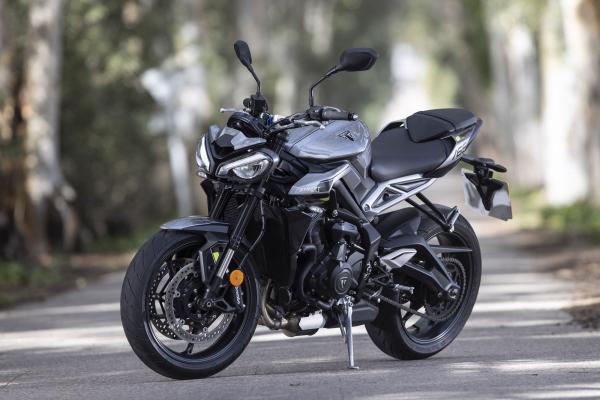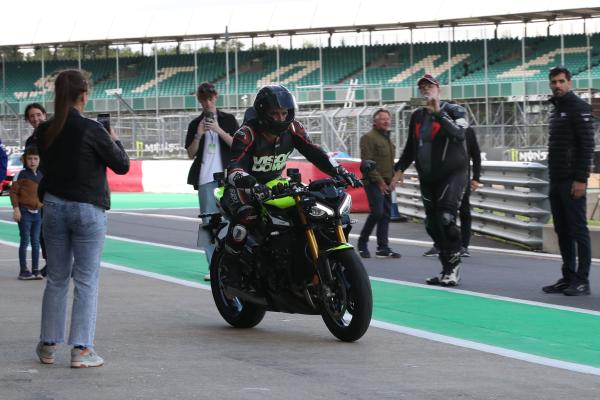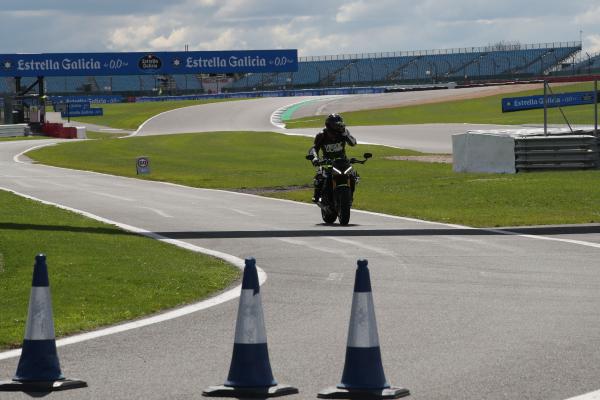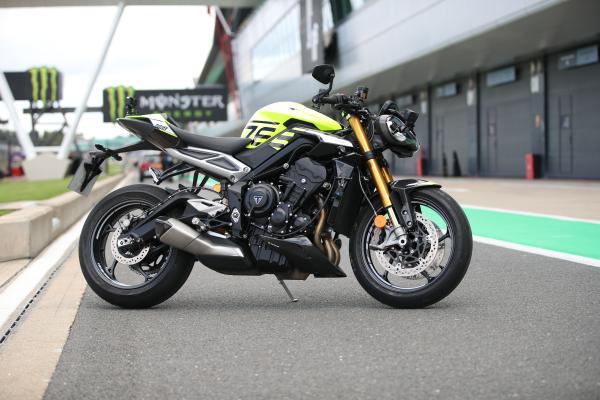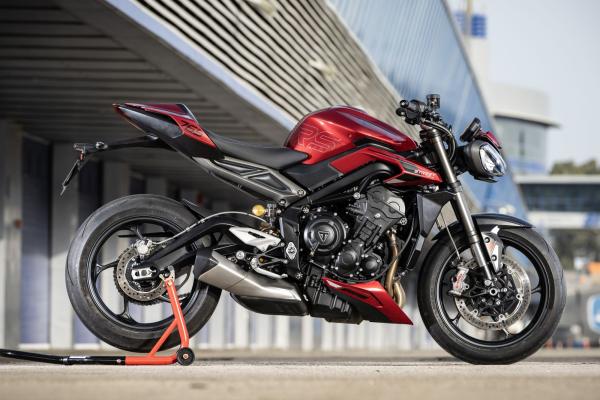2023 Triumph Street Triple 765 R, RS, and Moto2 Edition review
For the test of the new 2023 Triumph Street Triple 765 R and RS, we headed off to Jerez, for a full road and track review of the mid-weight naked

Member for
54 years 8 monthsA light sprinkling of new technology, more power, chassis tweaks and revised styling are the main talking points of the new 2023 Triumph Street Triple R and RS. In simple terms, the R is much closer to the last generation 2020 Street Triple RS, while the 2023 RS is now a much more focused machine.
For this press launch, Triumph pulled out the big guns, with a track test on the stunning MotoGP circuit at Jerez, and then a road ride around the local area. On the track, we’d be riding just the RS, while the road ride would see us swapping between the two models.
Update - we have now also ridden the limited edition Triumph Street Triple 765 Moto2 Edition, click on this link to be taken to that review.
What’s new with the 2023 Triumph Street Triple range?
For a deeper analysis of the new Street Triple range you can check out this page, which gives all the models (including the Moto2 Edition) a thorough going over. In summary, the big news is more power and technology. All the bikes in the range now have IMU control, meaning lean-sensitive traction control, ABS, and wheelie control. The R now produces 118bhp (2bhp more than before), while the RS makes 128bhp (5bhp more than before). The RS also gains sharper steering, thanks to an increase in rake angle, and still gets an Öhlins rear shock as before. The RS also gains Brembo Stylema calipers and a radially mounted Brembo MCS master cylinder.
2023 Triumph Street Triple R and RS pricing and colours
The new Street Triple R comes in at £9,595 for the base colour Silver Ice (as ridden on the road) and £200 more for the Crystal White option. The RS will cost you £11,295 for the Silver Ice colour, while Carnival Red (as ridden on track and road) and Cosmic Yellow are an extra £200.
2023 Street Triple 765 PCP example
Model | Deposit | Monthly | Duration | Mileage | Final Payment |
R | £2,025.32 | £119 | 37 | 4,000 | £5,369 |
RS | £2,413.07 | £135 | 37 | 4,000 | £6,496 |
*standard colours
Service intervals for all models are 6,000 miles or 12 months, whichever comes first.
2023 Triumph Street Triple R and RS engine
Externally the updated engine of the bike looks very much like the old machine. Peel back the casings though and you’ll find new pistons, conrods and combustion chambers. The compression ratio is increased (from 12.65:1 to 13.25:1), while new valves and cams increase lift for improved performance and efficiency. These aren’t just wish list additions to the model either, as pretty much all of the new stuff added to the motor comes courtesy of the highly successful Triumph Moto2 project.
Delve further into the engine and there is a heavily revised gearbox, with a taller first gear and shorter ratios in the rest of the box. The final drive has also been tweaked, with a view to making this the fastest accelerating Street Triple ever.
With more power and torque across the family, the new Street Triple was never going to disappoint, and with the weather gods shining on the Jerez circuit we had perfect conditions to get to grips with the updated machine. It’s tricky to put your figure on the extra power, but the short gears from second gear onwards really do make themselves felt. While the new ratios mean you are only ever an easy snick of the lever away from another rush of acceleration, the layout of Jerez, and some of the shorter straights in particular, have me nudging the rev-limiter rather than hooking the next cog. Likewise, there are a few slower corners that can be dealt with in either second or third gear. This flexibility is key to the Street Triple; it just feels so effortless to ride fast. The throttle connection, as with pretty much all Triumphs, feels crisp and accurate, and the 59lb-ft of torque is as wide and accessible as it’s always been.
Out on the roads around the circuit, we hopped between the R and RS models, so it was a good chance to get a feel for the differing power outputs of each machine. While the RS is, obviously a bit more eager out of slower corners, there isn’t much to choose between them. The torque of both is identical, and that middle part of the rev-range is where you’ll be doing most of your work. Crucially though, the RS doesn’t feel like more of a handful on the bumpy Spanish roads. They are both a doddle to ride, whether you are ambling through traffic in town or doing your best to burn your licence on a B-road.
2023 Triumph Street Triple R and RS chassis, suspension, and handling
Starting with the RS at the track; session one was a bit of a fact-finding mission for me. The last time I ride here it was on a Ducati Panigale V4 S and I had to do some serious recalibration of my braking points and gear selection. Session two though saw it all start to come together, and by the end of that, I was exploring the braking zones much more. My main conclusion from the two sessions was that the bike was fairly softly set up, and you could feel some pumping from the rear shock under acceleration. Likewise, the front end didn’t feel totally composed, especially braking into the second-gear hairpin at the end of the back straight.
After chatting to chassis engineer Felipe Lopez, it transpired the bikes had been given a sport suspension setting, not a dedicated track one. Felipe assured me that a firmer and more focused bike was just a twiddle of an adjuster away and he set to work. Lap one ono this new track setting was an eye-opening experience. The Street Triple was now sitting on its nose slightly more, with stronger rebound damping and pre-load in the Öhlins STX40 rear shock, and increased compression damping and preload in the Showa Big Piston Forks. Right away the bike felt sharper, steering quicker and glueing me to turns in a much more composed manner. At the end of the long back straight, the front end was now super stable under braking, weaving significantly less and inspiring much more confidence. This tweaked suspension really did transform the bike, it felt like another model of the machine, like someone had wheeled a Street Triple RR out into the pitlane and sent me off on that. Incredible really given that all it took was a minute of time and years of track riding experience (Felipe – not me) to achieve it!
With the track riding now (sadly) over, it was time to jump on the bikes and hit the bumpy Spanish roads. Going from the MotoGP-spec track to these pockmarked and eroded routes was interesting, but with the bikes now in a comfort suspension setting it dealt with it all fairly well. Mid-corner bumps would have the bike wiggling a bit, but not to the point that you could feel it tying itself in knots. The Showa rear shock of the R is noticeably less composed in this kind of situation, with the Öhlins of the RS feeling more composed and enabling you to ride through the bumps, rather than backing off and trying to avoid them. It’s something that is replicated at the front end, with the Showa Big Piston Forks of the RS just feeling more controlled than the Separate Function Forks – Big Piston items on the R. It sounds like these two setups are the same, but that isn’t the case, and the difference can very much be felt.
Another big change between the models comes at the front end, with the R using Brembo M4 stoppers, and the RS getting top-spec Stylema calipers and an MCS master cylinder. On this front, I don’t actually think the RS has much more in the way of braking power, as both bikes seem to stop on a sixpence should you need them to. What I think the RS has which the R doesn’t is more control and a nicer feel through the span and ratio adjustable lever.
2023 Triumph Street Triple R and RS equipment and electronics
Both bikes get the same IMU upgrade for 2023, with the same options to adjust the riding modes, ABS and so on. They do both get different dash designs though, with the R gaining a small TFT circled by an LED tacho. The RS though has a full-screen TFT, which, while looking great, is not very helpful on track. The rev counter is like a large coloured blob that grows from the centre of the TFT outwards. It makes it almost impossible to quickly glance at the dash and get an idea of where you are in the rev range. As the most performance-oriented bike in the range, I’d really like to see an actual tacho, with a needle that tickles the redline. For me, this current system is a case of form over function, and it has slightly missed the mark.
Elsewhere on the bike, you get a quickshifter as standard regardless of the model, an assisted slipper clutch and full LED lighting. The quickshifter is a lovely thing to use; slick, and accurate, and it shifts without hesitation. Banging the bike down the ‘box and the slipper clutch with gobble up any excess torque and keep everything nice and composed.
One change between the two models is in the hoops that are fitted as standard. While the RS gets the Super Corsas, the R gains Continental ContiRoad items. While some differentiation between the models is fine, the choice of the Continentals I find a bit weird. I wasn’t a huge fan of them on the road, and wonder why Triumph didn’t opt for the latest Pirelli Rosso Corsa IVs which in my mind are a much better-performing tyre in all conditions.
On the electronics front, the new Street Triple 765 is top-class: Cornering ABS, lean-sensitive traction control, wheelie control, riding modes… it’s all there. You have four levels of traction control intervention, but weirdly the ABS is locked in and the intervention level is governed only by the riding mode you are in – rain mode will be high ABS intervention, track mode low. You can’t though adjust this independently within the mode, and there is no option to turn the ABS off altogether. It’s a bit of a gripe of mine that the bike has all the tech at your disposal, but for those of us who like to dig down and tweak the settings, this one-size-fits-all approach might be frustrating.
It's a theme that continues with the wheelie control. The bike has wheelie control, but because you can’t adjust the intervention level of it independently, it basically feels like a traction control governed system. I’m sure in practice it’s much better placed to make decisions, given that it knows where the bike is at any given time, but not having an option to dial in more or less wheelie control without affecting the traction control level is a shame.
2023 Triumph Street Triple R and RS riding position and comfort
With its relaxed rider triangle, the new Street Triple is just as easy to live with as ever. It’s roomy up top and below, although on the track I did hit a snag. I found it very difficult to get my foot in such a position that it wouldn’t drag on the track, even when hanging off the bike as far as I dared. If you never ride on track, fear not, you’ll probably never have an issue. If you do ride on track, there might be some minor adjustments to make before you ride out of the pits.
What we like about the 2023 Triumph Street Triple R and RS
- Effortless to ride, fast or slow, road or track
- Beautiful brakes and suspension that can do it all
- IMU control is a welcome step up across the range
What we didn’t like about the 2023 Triumph Street Triple R and RS
- More electronic adjustability on some fronts would be nice
- TFT dash on the RS isn’t helpful on track
- Footpeg position has eaten my boots!
2023 Triumph Street Triple R and RS verdict
The Street Triple is one of those bikes that doesn’t really need to be improved, I mean, from a rider’s perspective, there really has never been much to dislike. You have that beautiful Daytona-derived chassis, top-spec suspension and one of the sweetest engines on the planet. What Triumph have tried to do is keep the bike current, with a nose ahead of the pack of other (similarly high-tech) middleweights from Europe and Japan. On that front, the bike is a resounding success. It’s always been ahead of the game on the handling and performance front, and now with that extra tech and improved dynamics, the Street Triple is looking like even better bang for your buck. It’s still the definitive bike for those looking for pure performance on the road and track, and it's going to take some serious work from the competition to change that.
Triumph Street Triple 765 Moto2 Edition review
Launched earlier this year, the Triumph Street Triple 765 Moto2 Edition becomes the most powerful and focused version of Triumph’s class-leading middleweight naked bike. Fitting then that our first chance to swing a leg over it would be on the hallowed Silverstone circuit at the beginning of the British MotoGP weekend.
The new bike is blessed with revised internals and a higher compression ratio than the other Street Triples in the range, boosting the power to 128bhp and making this machine more powerful than the first iteration of the equally iconic Speed Triple.
Other changes come in the form of Ohlins suspension front and rear, Brembo Stylema calipers and a more focused riding position thanks to clip-on bars that put you in a sports bike-a-like riding position - just sans a fairing sadly. You can read a more detailed overview of the Street Triple Moto2, Street Triple R and Street Triple RS here.
Triumph Street Triple 765 Moto2 Edition review
Now, I’ve got to be clear, this was the most fleeting of introductions to the new bike, with time on the track limited to just a handful of laps of the beautiful Silverstone GP circuit. It did though give us just enough seat time to get a feel for the revised machine, and straight out of the pits the riding position makes the bike a very different animal to ride. The handlebars are around 30mm narrower than you get on the R and RS, but the biggest change comes from them dropping your body down, and placing more of your weight over the front end of the bike. The result is a sharper steering machine, with better feel at the front. The standard versions of the Street Triple are no slouches around a track, but the Moto2 just feels like an altogether slicker proposition. It glides through corners in a way that the RS just can’t, and feels more composed as you transition from entry, to apex, to exit. Another instantly noticeable update is the suspension and with fully adjustable Ohlins front and rear the Moto2 Edition feels totally planted. I’d drawn the short straw on this event, and I was the first rider to hit the track and tyre warmers weren’t an option. I didn’t have any issues getting up to speed though with the Pirelli Diablo Supercorsa V3 hoops heating up quickly meaning I was comfortable at lean after about two-thirds of the first lap of the 1.8-mile track.
With Silverstone boasting one of the best track surfaces in the UK, the conditions I was testing the bike in were not what you’d call real world. It’s billiard table smooth there, and your sliders seemingly glide across the surface at the apex of every corner. That means I can’t comment on how composed the bike will be over lumps, bumps and potholes. That said, this is Ohlins kit which is renowned for being plush enough for comfortable road riding, yet sporty enough to have you knee-down with ease on the track.
Like the Street Triple RS, braking is taken care of by Brembo Stylema calipers which are hooked up to a trick IMU-controlled cornering ABS system. The brakes are super strong, and despite being the same as found on the RS they felt more powerful thanks to my weight now sitting over the headstock of the bike.
One thing I didn’t feel the need to do was adjust the suspension, which is something we had to do on the launch of the Street Triple RS at Jerez. After a few sessions on that bike, and as the tyres got more worn, the amount of movement under braking and on corner exit began to increase. Adding some more preload and rebound damping completely illuminated this and sharpened up an already sharp machine. The Moto2 doesn’t need any of that, and right out of the box you have the best handling Street Triple that Triumph has ever created.
One of the biggest headlines from the launch of the bike was the revised engine making this the most powerful Street Triple to date, and while more horsepower is always welcome, could I feel the extra ponies on track - not really. The Moto 2 Edition has around 8bhp more than the stock RS that I rode at Jerez earlier this year. I think to truly put your finger on the improved output you’d need to test the two bikes on the same day, same track, back-to-back.
Another thing I’d like to get a feel for is the comfort of the bike, although I can tell you it’s not quite as aggressive as it looks in the pictures. The handlebars aren’t super low, and neither are they overly swept back - something that kills my wrists on a long ride. The footpeg position is also the same as the other Street Triples, so it’s not some wildly aggressive and cramped supersports bike - on the ergonomics front anyway. The seat is slightly taller than the found on the RS, but there are just a few millimetres in it and you really can’t feel the difference at all.
Triumph Street Triple 765 Moto2 Edition verdict
We are very used to seeing Triumph churn out special editions and collaborative bikes by the boatload, and part of me thought the Moto2 Edition would be just another special edition, with some trick graphics and not much else. That’s very far from the truth though, and the changes Triumph has implemented make a very noticeable difference, especially on the track. It’s got all the right kit in all the right places and is definitely the best handling Street Triple (quite possibly best handling naked bike) Triumph has ever built. I just still don’t understand why Triumph hasn’t done what the world wants them to do and slap a bloody fairing on the thing.
More information on the new 2023 Street Triple models can be found on the Triumph website.
Images: Gareth Harford and Chippy Wood.
Images Moto2 Edition: David Goldman
2023 Triumph Street Triple 765 R and RS specs
STREET TRIPLE R | STREET TRIPLE RS | ||
Type | Liquid-cooled, 12 valve, DOHC, inline 3-cylinder | ||
Capacity | 765 cc | ||
Bore | 78.0 mm | ||
Stroke | 53.4 mm | ||
Compression | 13.25:1 | ||
Maximum power | 120 PS / 118.4 bhp (88.3 kW) @ 11,500 rpm | 130 PS / 128.2 bhp (95.6 kW) @ 12,000 rpm | |
Maximum torque | 80 Nm (59 ft lb) @ 9,500 rpm | ||
Fuel system | Multipoint sequential electronic fuel injection with electronic throttle control | ||
Exhaust | Stainless steel 3 into 1 header system with low single sided stainless steel silencer | ||
Final drive | X-ring chain | ||
Clutch | Wet, multi-plate, slip & assist | ||
Gearbox | 6 speed | ||
CHASSIS
STREET TRIPLE R | STREET TRIPLE RS | |
Frame | Aluminium beam twin spar frame with 2 piece high pressure die cast rear subframe | |
Swingarm | Twin-sided, cast aluminium alloy | |
Front wheel | Cast aluminium alloy 5 spoke, 17 x 3.5 in | |
Rear wheel | Cast aluminium alloy 5 spoke, 17 x 5.5 in | |
Front tyre | 120/70 ZR 17 | |
Rear tyre | 180/55 ZR 17 | |
Front suspension | Showa 41 mm upside down Separate Function Forks - Big Piston (SFF-BP), adjustable compression and rebound damping, and preload adjustment. 115mm wheel travel | Showa 41 mm upside down Big Piston Forks (BPF), adjustable compression and rebound damping, and preload adjustment. 115mm wheel travel |
Rear suspension | Showa piggyback reservoir monoshock, adjustable compression, rebound and preload adjustment. 133.5mm wheel travel | Öhlins STX40 piggyback reservoir monoshock, adjustable compression and rebound damping, and preload adjustment. 131.2mm wheel travel |
Front brakes | Twin 310 mm floating discs, Brembo M4.32 4piston radial monobloc calipers, OC-ABS | Twin 310 mm floating discs, Brembo Stylema 4-piston radial monobloc calipers, OC-ABS, Brembo MCS radial master cylinder |
Rear brakes | Single 220 mm disc, Brembo single piston caliper, OC-ABS | |
Instruments | Multi-function instruments with colour TFT screen | Full colour 5" TFT instruments |
DIMENSIONS AND WEIGHTS
STREET TRIPLE R | STREET TRIPLE RS | |
Length | 2055 mm | 2052 mm |
Width (handlebars) | 792 mm | 792 mm |
Height without mirrors | 1047 mm | 1064 mm |
Seat height | 826 mm | 836 mm |
Wheelbase | 1402 mm | 1399 mm |
Rake | 23.7° | 23.2° |
Trail | 97.8 mm | 96.9mm |
Wet weight* | 189 kg | 188 kg |
Fuel tank capacity | 15 litres | 15 litres |
*(90% fuel – mass in running order)

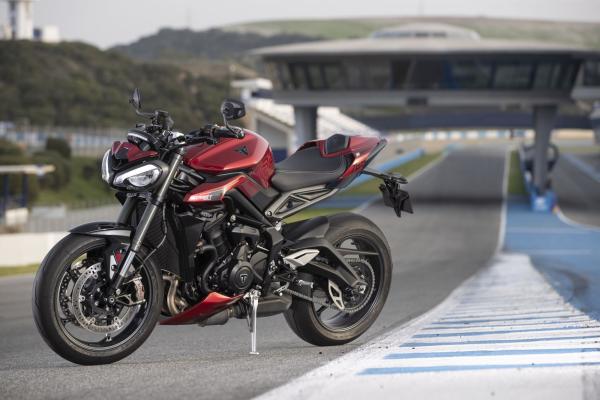
dbcf.jpg?itok=6_JLaBfc)
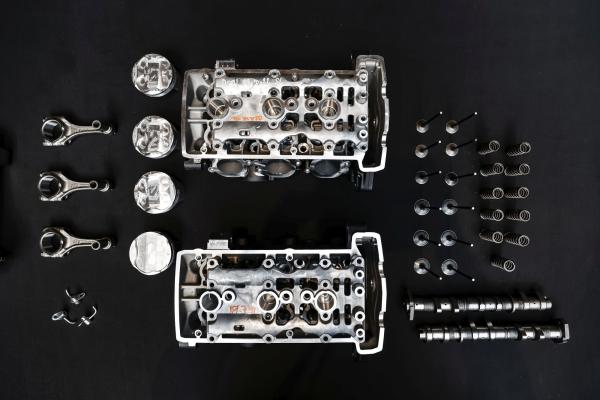
61dc.jpg?itok=v92AuRYv)
ebe9.jpg?itok=Gbvg58k0)
7946.jpg?itok=TZGyXFNL)
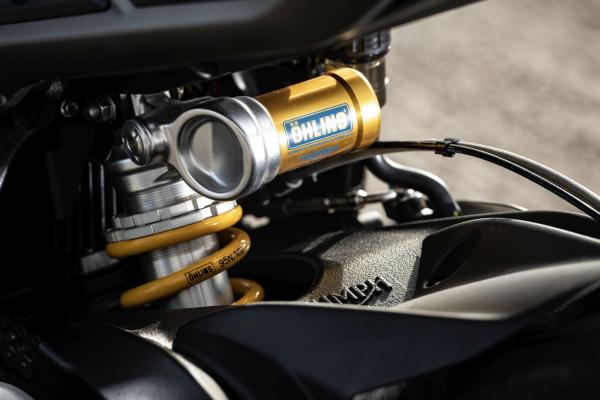

c5c9.jpg?itok=27aQ5dMC)
e608.jpg?itok=v5vC6T_i)
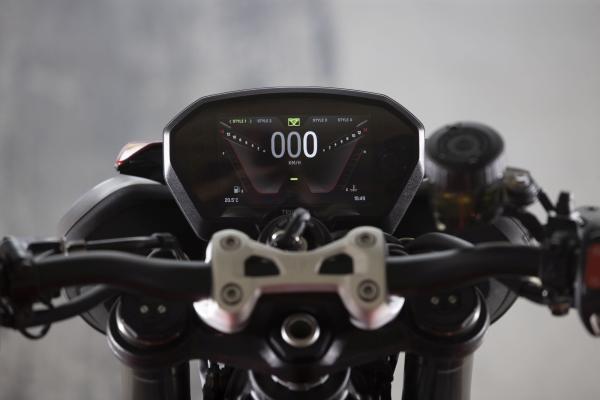

e156.jpg?itok=Z0mgXf79)
073b.jpg?itok=BqsoF-aU)
6a9c.jpg?itok=58fYjXPU)
